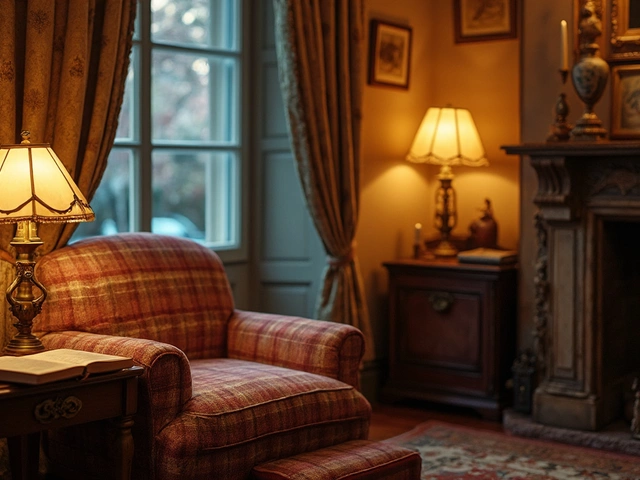
Picture sinking into your favorite chair at the end of a chaotic day, only to discover the seat feels stiff and lumpy—definitely not the cushy haven you hoped for. That's the thing about cushions; we take them for granted, until our backs and elbows remind us they've seen better days. There’s plenty of noise out there: is feather the king of the cushion world, or have modern foams taken the crown? Let’s get into the squishy, feathery, sometimes pokey details.
What Makes Feather-Filled Cushions Special?
Feather-filled cushions have history on their side. Long before polyester and fancy memory foams showed up, folks were stuffing pillows and seats with feathers. The main charm of feathers? It’s all about the feel. They mold to your body, offer a soft, almost cloud-like give, and for many people, that “sinking in” sensation is simply unbeatable. Goose and duck feathers are the usual stars, but it’s not just about the type—it’s also the mix. Pure feather cushions are super squishy, but sometimes a dash of down—those tiny fluffy feathers under the tougher outer feathers—gets blended in for extra softness and loft.
Unlike foam or synthetic fills, feathers have “bounce-back.” Ever notice how after a serious Netflix binge, your cushion still plumps up after a quick shake? That resilience comes from the springy quills. But there is a catch: some folks say cushions go flat if you’re not fluffing them up regularly. Let’s be honest, we don’t all have the discipline to plump, shake, and flip our sofa cushions after every use. But if you’re the patient sort, regular fluffing keeps them perky far longer than cheap foam alternatives. The trade-off is worth it for the right kind of comfort seeker.
Feathers also do a good job regulating temperature. Unlike thick foam, which can trap heat, a feather-filled cushion lets air flow naturally. That makes them a smart choice if you live somewhere warm or you’re always running hot, like my dog Bruno after a run in the sun. One thing to look out for: feather fill carries a bit of a reputation for poking. Quills can sneak their way out of covers—annoying, sure, but not the end of the world if you go for tightly woven covers or a feather-proof ticking.
How Do Feather-Filled Cushions Stack Up Against Other Fills?
Synthetics and foams have been taking over lately. The first reason: they’re often easier. Sit-and-forget, wash-and-walk-away types love polyester and memory foam. These materials aren’t as high-maintenance—most keep their shape with less fuss, and you’re less likely to catch a quill in your side. High-density foam, in particular, gives firmer support. Great if you’re up for a movie marathon or if you want something that holds up for years without sagging.
Memory foam is famous for pressure relief—it molds to your body, like what you get with mattresses. But this can be a double-edged sword. While it offers support, it doesn’t have the bounce or classic “sink” of feather fill. Foam and polyfill also tend to trap more heat, which matters in a stuffy room or a sunny apartment. Still, for those sensitive to allergies, synthetics sometimes win. Feathers collect dust and can trigger sniffles if you’ve got allergies.
If you care about eco-impact, feathers and down, when responsibly sourced, can be gentler on the planet than petroleum-based synthetics. Brands now have certifications (like RDS—Responsible Down Standard) to let you know the birds weren’t mistreated. Still, you have to pay more for these, and the budget versions often cut corners or blend feathers with fillers you might not want. There’s also the vegan angle—some people just don’t want animal-based products at home.
So which lasts longer? It’s not a slam dunk either way. Feather cushions last for years if you take the time to plump and rotate. Foam can outlast feathers by staying firm, but eventually, it will break down and lose shape. Bottom line: care and commitment can keep either running for a good stretch.
| Fill Type | Softness | Support | Maintenance | Lifespan | Allergy Risk | Eco-Factor |
|---|---|---|---|---|---|---|
| Feather | Very Soft | Medium | High | 5-10 years | Medium | Can be sustainable |
| Down/Feather Blend | Ultra Soft | Low-Medium | High | 5-10 years | Medium | RDS available |
| Polyester Fiber | Medium | Low | Low | 2-5 years | Low | Petrochemical-based |
| Foam | Firm | High | Low | 7-15 years | Low | Petrochemical-based |
| Memory Foam | Soft-Firm | High | Low | 8-12 years | Low | Recycling challenging |

Common Issues with Feather-Filled Cushions
Let’s talk about the quirks, because even the best feather-filled cushion isn’t perfect. First, sagging—without regular plumping, that lush, overstuffed feel will give way to sad, pancake-flat pads before you know it. Some blame the fill weight; over time, feathers break or get compacted, so even a cushion that starts out like a luxury bed might slump into mediocrity. If you’re the kind who forgets these little chores, this could drive you nuts.
Then there’s the “feather freeze”—pull the cushion a certain way and an armful of quills suddenly jabs you. It feels like sitting on a hidden porcupine. Tight cushion ticking helps, but over years, some escapees are almost guaranteed. Covers made of thick cotton or synthetic microfiber tend to cut down on feather leaks a lot. If you’ve got pets—Bruno likes to make a nest on our sofa—the fluff gets squished down fast, and his claws sometimes poke holes that let more feathers loose.
Next up: allergies. If your eyes water and your nose runs the minute you plop down, you’re not alone. Feathers can attract dust mites, and for sensitive folks, that’s a deal-breaker. Using special allergen-proof encasements makes a difference (think high-thread-count cotton covers), but not everyone wants to baby their furniture this much.
On cleaning, it’s not a “toss it in the wash” deal. Feathers clump badly when wet, so most feather cushions just need spot cleaning or professional help. Skip tossing a feather cushion in your home washer, unless you’re keen on a lumpy, forever-damp result. For stubborn smells or dust, airing out in the sun works—UV rays help kill bacteria, and everything feels fresher after a breezy afternoon outside.
Noise is another quirk. With heavier cushions or cheaper fills, you’ll sometimes get a faint crunching or rustling sound every time you shift. It’s not loud enough to wake the neighbors, but it can surprise you at first, especially after years with silent foam cushions.
How to Choose and Care for Feather-Filled Cushions
Choosing the right feather-filled cushion isn’t a one-size-fits-all thing. Start by checking the fill power—the higher the number, the plusher and more resilient the cushion. Anything rated above 600 is seriously cushy. Then, ask what’s inside. Pure feather? A feather-down blend? The ratio matters. More down means a softer feel but a higher price tag.
Check the casing as well. Go with a tight weave, 230-thread-count or higher, if you’d like fewer stabby surprises. Some brands use special featherproof ticking just for this reason. Don’t overlook the zipper, either. Easy access means you can adjust the fill, adding or removing feathers until you nail the perfect squish factor.
Plumping isn’t a myth—it really does help. Grab each cushion by its sides and give it a few good shakes; then thump it back into shape with your fists. This fluffs up the fill, redistributes the feathers, and helps avoid long-lasting dents. Once a week is plenty for most families. If you skip this step, expect flat, tired looking seats—especially in your go-to TV spot.
If you spill something, spot clean right away using a mild soap and a damp cloth. Dab, don’t rub. For odors or stubborn stains, dust with baking soda and let it sit before vacuuming off. Deep cleaning? Take it to a pro. Commercial machines and dryers can handle the load and heat needed for a thorough, even clean, and that way, you don’t end up with a clumpy mess.
For feather containment and allergy control, use zippered covers or pillow protectors made for down products. Wash outer covers regularly (especially if dogs like Bruno are around!). Rotate cushions, flipping and swapping their position, so wear evens out across your sofa or chairs. Store spare cushions somewhere dry—dampness and feathers do not mix. If you see feathers poking out, don’t pull them—this just opens up the weave more. Instead, pinch the area and gently work the feather back inside or use a little tape to calm down stubborn spots until you get around to sewing up a small patch.

Making the Right Choice for Your Space
This is the heart of the matter: are feather-filled cushions better? Truth is, it depends on what kind of comfort you crave, how much effort you’re willing to put in, and what works for your lifestyle. If you love a soft, luxury feel with temperature control, feather cushions can make every couch or accent chair feel like a boutique hotel. If you’re particular about sustainability, look for brands with certifications, or vintage options—feathers can last decades with some care.
On the other hand, if you want zero maintenance or worry about allergies, foam and synthetic fills might be your best bet. They tend to be cheaper upfront, easier to clean, and stand up to heavy use—perfect for busy families, pets, or anyone who doesn’t want to baby their sofa. High-quality nylon or polyester cushions can convincingly mimic the “sink” of feathers, just without the daily fluffing duties.
For anyone still on the fence, the right mix is out there. Some people choose feather cushions for accent chairs—where short bursts of comfort matter most—and stick to foam in family spaces. Others add a foam core inside a feather-filled cushion; this hybrid has the squish factor around the sides, but a supportive center that stands up over time.
Cushion tech keeps evolving. These days, you’ll find “engineered down” and recycled feathers, eco-friendly foams, and hybrid options that really blur the lines. The best move? Try before you buy. Or, if you can't, lean on return policies, so you’re not stuck with seats that flatten, poke, or disappoint. And if you do go feather, don’t skip the weekly fluff. Your future, blissfully comfortable self will thank you.




